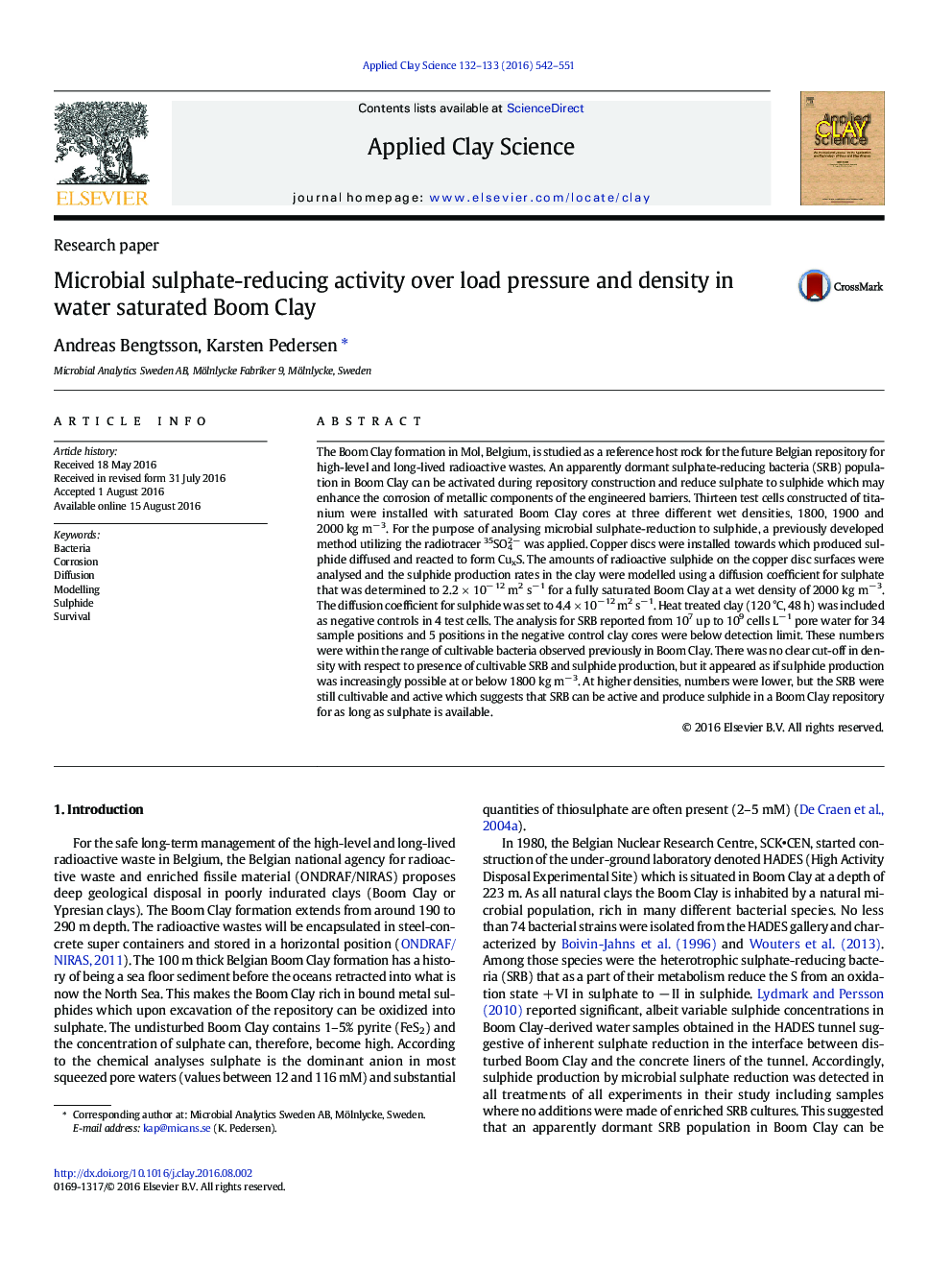| کد مقاله | کد نشریه | سال انتشار | مقاله انگلیسی | نسخه تمام متن |
|---|---|---|---|---|
| 5468788 | 1519054 | 2016 | 10 صفحه PDF | دانلود رایگان |
عنوان انگلیسی مقاله ISI
Microbial sulphate-reducing activity over load pressure and density in water saturated Boom Clay
ترجمه فارسی عنوان
فعالیت سولفات میکروبی بر فشار و چگالی بار در آب پر شده است
دانلود مقاله + سفارش ترجمه
دانلود مقاله ISI انگلیسی
رایگان برای ایرانیان
کلمات کلیدی
باکتری، خوردگی، نفوذ، مدل سازی، سولفید، بقا،
موضوعات مرتبط
مهندسی و علوم پایه
علوم زمین و سیارات
ژئوشیمی و پترولوژی
چکیده انگلیسی
The Boom Clay formation in Mol, Belgium, is studied as a reference host rock for the future Belgian repository for high-level and long-lived radioactive wastes. An apparently dormant sulphate-reducing bacteria (SRB) population in Boom Clay can be activated during repository construction and reduce sulphate to sulphide which may enhance the corrosion of metallic components of the engineered barriers. Thirteen test cells constructed of titanium were installed with saturated Boom Clay cores at three different wet densities, 1800, 1900 and 2000 kg mâ 3. For the purpose of analysing microbial sulphate-reduction to sulphide, a previously developed method utilizing the radiotracer 35SO42 â was applied. Copper discs were installed towards which produced sulphide diffused and reacted to form CuxS. The amounts of radioactive sulphide on the copper disc surfaces were analysed and the sulphide production rates in the clay were modelled using a diffusion coefficient for sulphate that was determined to 2.2 Ã 10â 12 m2 sâ 1 for a fully saturated Boom Clay at a wet density of 2000 kg mâ 3. The diffusion coefficient for sulphide was set to 4.4 Ã 10â 12 m2 sâ 1. Heat treated clay (120 °C, 48 h) was included as negative controls in 4 test cells. The analysis for SRB reported from 107 up to 109 cells Lâ 1 pore water for 34 sample positions and 5 positions in the negative control clay cores were below detection limit. These numbers were within the range of cultivable bacteria observed previously in Boom Clay. There was no clear cut-off in density with respect to presence of cultivable SRB and sulphide production, but it appeared as if sulphide production was increasingly possible at or below 1800 kg mâ 3. At higher densities, numbers were lower, but the SRB were still cultivable and active which suggests that SRB can be active and produce sulphide in a Boom Clay repository for as long as sulphate is available.
ناشر
Database: Elsevier - ScienceDirect (ساینس دایرکت)
Journal: Applied Clay Science - Volumes 132â133, November 2016, Pages 542-551
Journal: Applied Clay Science - Volumes 132â133, November 2016, Pages 542-551
نویسندگان
Andreas Bengtsson, Karsten Pedersen,
